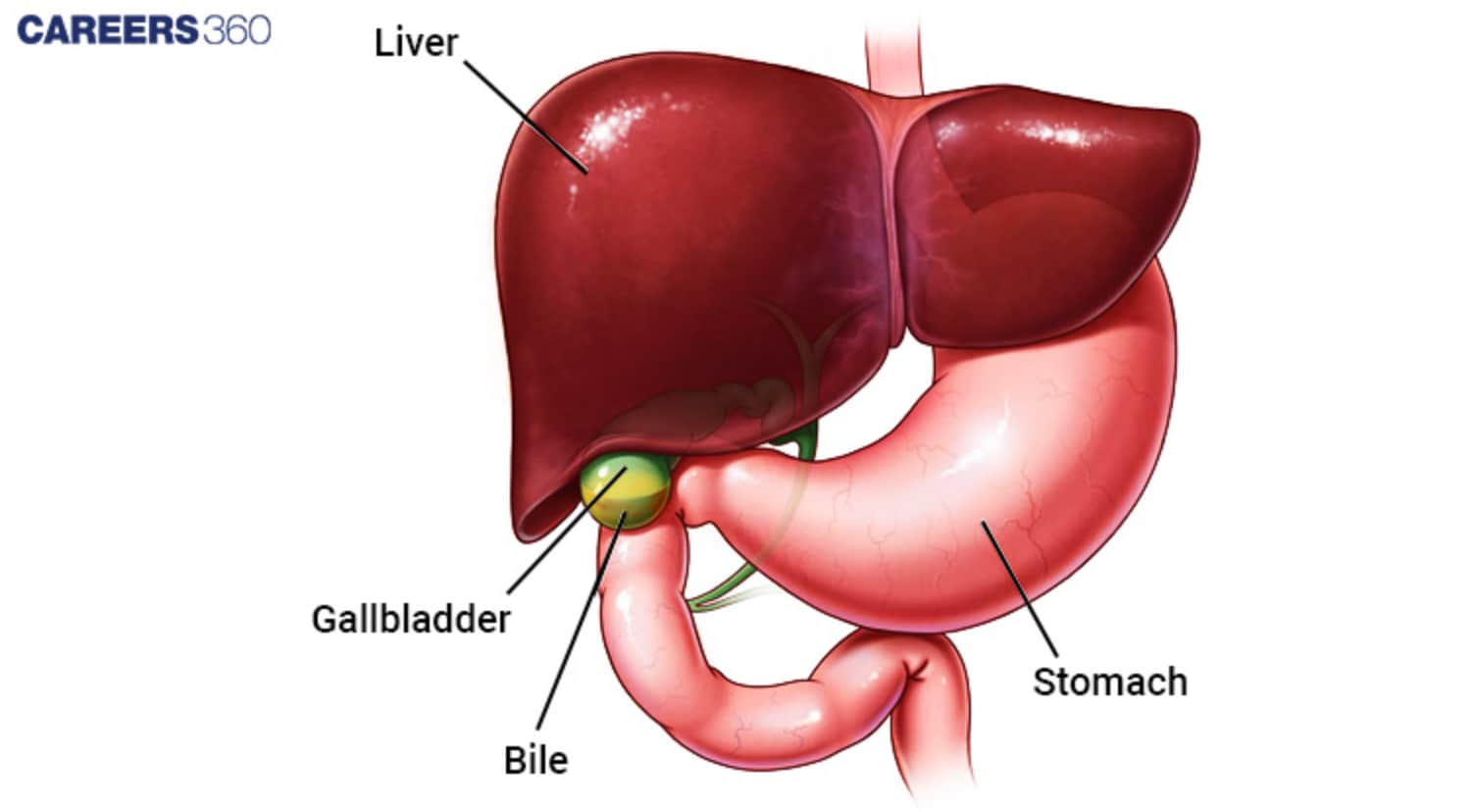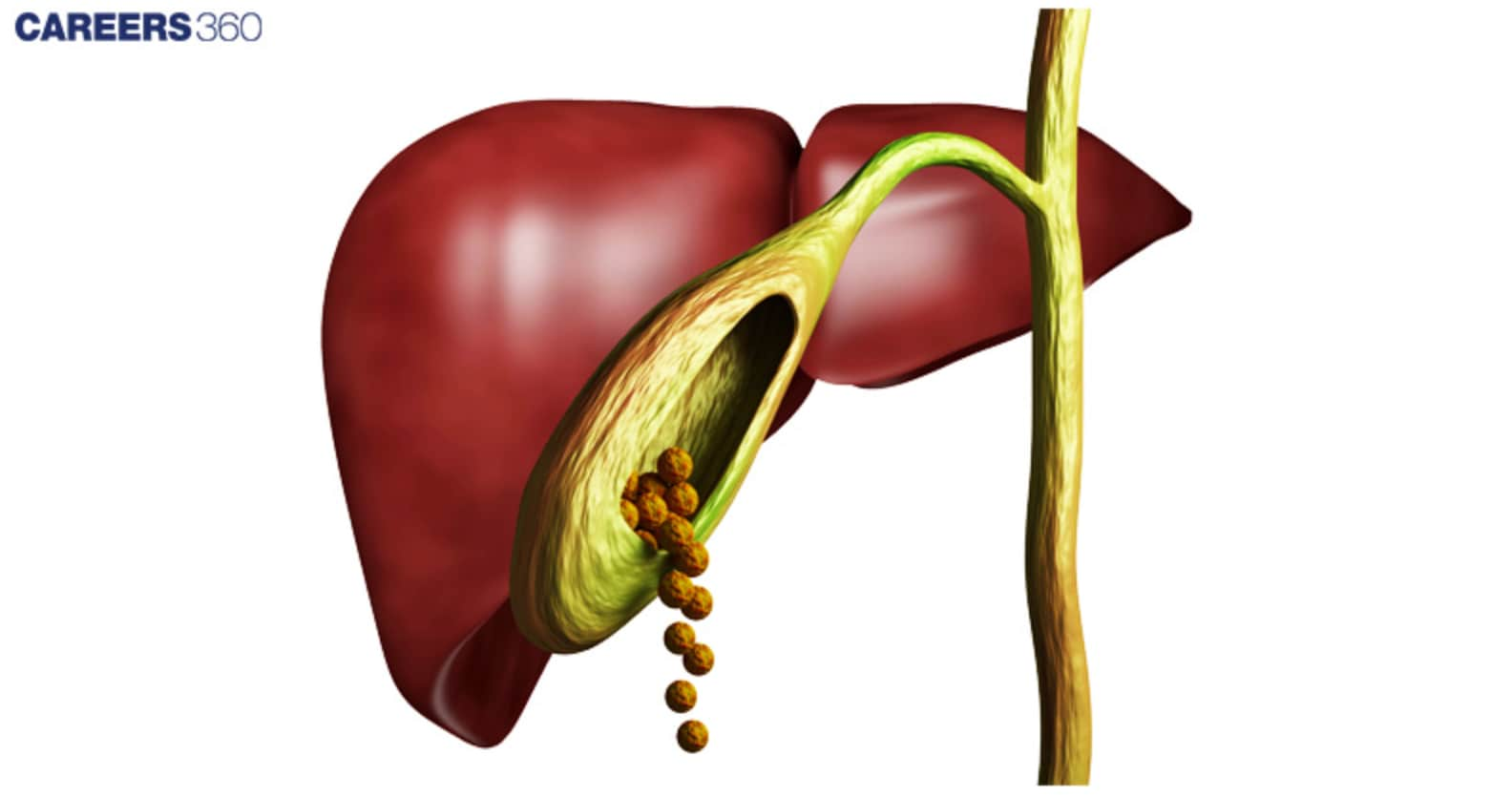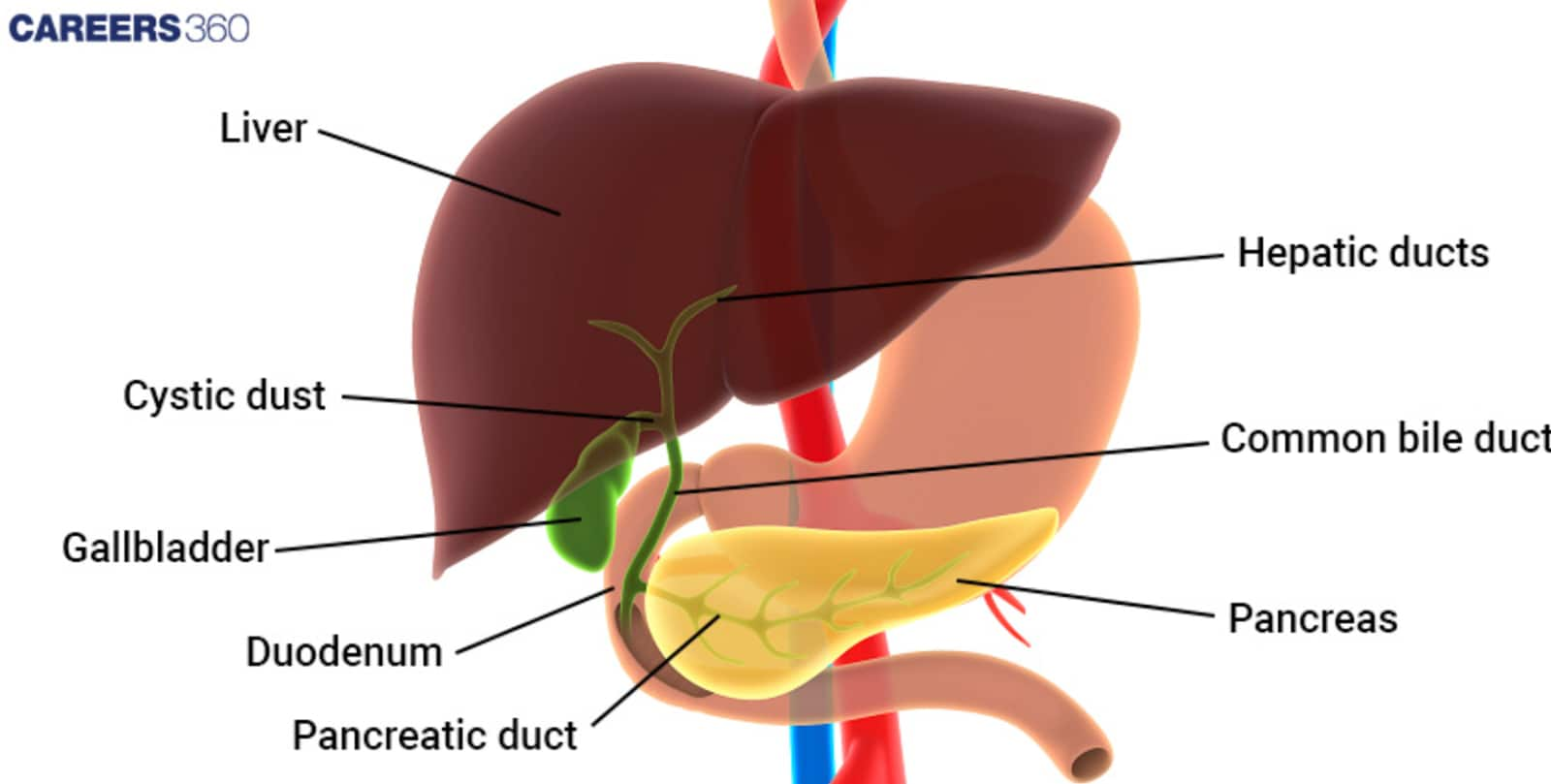Gallbladder: Definition, Function, Diagram, Examples
What Is The Gallbladder?
The gallbladder is located under the liver and is connected to it through the bile ducts. The main function of this organ is to store bile produced from the liver and then discharge it into the small intestine while food is being digested.

Structure Of Gallbladder
Thestructure of gall bladder is listed below-
Structure
The gallbladder is a small, hollow viscus that can hold about 30-50 millilitres of bile. It has three parts: fundus, body, and neck.
Position
The gallbladder lies on the undersurface of the liver and through the hepatic and cystic ducts directly drains into the common bile duct.
Histology
The wall of the gallbladder consists of three layers, namely the mucosa, muscular, and serosa. Within the three layers lies the mucosa, with its epithelial cells that absorb water and electrolytes, thus concentrating the bile.
Functions Of The Gallbladder
The functions of gall bladder is listed below-
Store and Concentrate Bile
Bile is produced by the liver continuously. Bile prepared by the liver is stored and concentrated in the gall bladder. It contracts and releases into the small intestine as soon as food enters the small intestine.
Secretion of Bile
Bile that has been secreted from the gall bladder is then channelled through the cystic duct and into the common bile duct. It reaches the small intestine where finally digestion and absorption of the fats are completed.
Role Of Bile In The Process Of Digestion
The role of bile in the process of digestion.
Composition of Bile .
Bile is composed of bile salts, cholesterol, the breakdown pigment bilirubin, and electrolytes, which act in synergy and make fats emulsify.
double-angled quote
Role in Fat Digestion
Emulsification of large fat molecules by bile salts into minute droplets increases the surface area for the action of digestive enzymes and is therefore paramount to efficient digestion and absorption of dietary fats.
Common Gallbladder Conditions
The common gall bladder conditions are listed below-
Gallstones (Cholelithiasis)
These are just hard deposits formed in the gallbladder out of bile components. They can either be made of cholesterol or bilirubin. Common presentations are pain, nausea, and jaundice.

Cholecystitis
Inflammation of the gallbladder, mostly due to a gallstone obstructing the cystic duct, is reflected in a sudden acute or chronic condition of inflammation accompanied by abdominal pain, fever, and vomiting.

Other Conditions
Other complications about the gallbladder include polyps, and growths on the wall of the gallbladder; the relatively severe, though uncommon, are gallbladder cancer.
Diagnosis And Treatment
The diagnosis and treatnent is listed below-
Diagnosis
The common diagnostic tools are generally ultrasound, CT scan, and HIDA scan used to visualize the gallbladder and enable the doctor to point out abnormalities.
Treatment:
Treatments depend on the nature of the condition. Gallstones can either be chemically dissolved or surgically removed (cholecystectomy). The surgical technique applied in this procedure is laparoscopic, that is, it is a minimal invasion technique used.
Prevention
The prevention methods are listed below-
Diet and Lifestyle
The low-cholesterol, high-fibre diet, coupled with regular exercise and a healthy body mass index, will go a long way in keeping problems concerning the gallbladder at bay.
Regular Check-ups
Any problem with the gallbladder can be detected early if one goes for regular check-ups. As such, treatment and management are assured at the right time.
Recommended video for "Gall bladder"
Frequently Asked Questions (FAQs)
The prominent symptoms include generalized abdominal distress, nausea, vomiting, and jaundice.
The crystallization of either cholesterol or bilirubin causes the formation of gallstones due to an imbalance in the composition of bile.
A low-cholesterol, high-fibre diet, with regular exercise, will help prevent most of the problems related to the gallbladder.
Gallbladder surgery is very safe, especially today's laparoscopic cholecystectomy. Most surgeries are very successful.
Yes, you can live without a gallbladder. Bile will simply flow directly from the liver into the small intestine, although some adjustments in the diet might have to be made.
Also Read
30 Nov'24 03:25 PM
26 Nov'24 05:38 PM
25 Nov'24 06:43 PM
25 Nov'24 05:45 PM
25 Nov'24 04:48 PM
25 Nov'24 03:52 PM
23 Nov'24 04:30 PM
23 Nov'24 10:03 AM